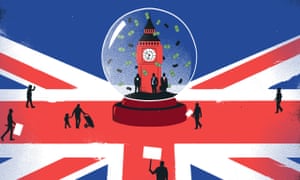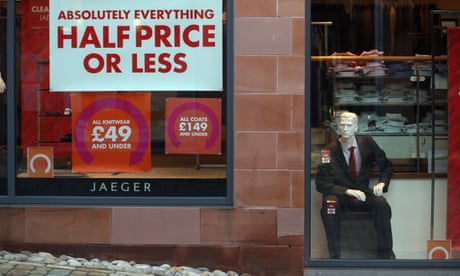Critics say high-frequency trading makes markets too fickle amid rising anxiety over the global economy writes Robin Wigglesworth in The FT
Philippe Jabre was the quintessential swashbuckling trader, slicing his way through markets first at GLG Partners and then an eponymous hedge fund he founded in 2007 — at the time one of the industry’s biggest-ever launches. But in December he fell on his sword, closing Jabre Capital after racking up huge losses. The fault, he said, was machines.
“The last few years have become particularly difficult for active managers,” he said in his final letter to clients. “Financial markets have significantly evolved over the past decade, driven by new technologies, and the market itself is becoming more difficult to anticipate as traditional participants are imperceptibly replaced by computerised models.”
Mr Jabre is not alone. There has been recently a flurry of finger-pointing by humbled one-time masters of the universe, who argue that the swelling influence of computer-powered “quantitative”, or quant, investors and high-frequency traders is wreaking havoc on markets and rendering obsolete old-fashioned analysis and common sense.
Those concerns were exacerbated by the volatility in financial markets in December, when US equities suffered their biggest monthly decline since the financial crisis, despite little fundamental economic news. And with growing anxiety over the strength of the global economy, tightening monetary policy across the world and an escalating trade war between China and the US, these trades are getting more attention.
Even hedge fund veterans admit the game has changed. “These ‘algos’ have taken all the rhythm out of the market, and have become extremely confusing to me,” Stanley Druckenmiller, a famed investor and hedge fund manager, recently told an industry TV station.
It is true that markets are evolving. HFTs dominate the market-making once done by humans in trading pits and the bowels of investment banks. Various quant strategies — ranging from simple ones packaged into passive funds to pricey, complex hedge funds — manage at least $1.5tn, according to Morgan Stanley. JPMorgan estimates that only about 10 per cent of US equity trading is now done by traditional investors. Other markets remain more human, yet are slowly but surely being transformed.
This has made “the algos” a fashionable bugbear whenever markets tremble like they did in December. Torsten Slok, Deutsche Bank’s chief international economist, put them at the top of his list of the 30 biggest risks for markets, and even Steven Mnuchin, the US Treasury secretary who caused market unease with comments on liquidity late last year, has said the government will study whether the evolving market ecosystem fed the recent turmoil.
But markets have always been tempestuous, and machines make a convenient, faceless bogeyman for fund managers who stumble. Meanwhile, quants point out that they are still only small players compared with the vastness of global markets.
“It’s insane,” says Clifford Asness, the founder of AQR Capital Management. “People are missing the forest for the trees. That we trade electronically doesn’t change things, we just deliver the same thing more efficiently . . . It’s just used by pundits and fund managers as an excuse.”
The recent turmoil has unnerved many investors, but two other debacles stand out as having first crystallised the fear that algorithms are making markets more fickle and fragile.
At 2:32pm on May 6 2010, US equities suddenly and mysteriously careened lower. In just 36 minutes the S&P 500 crashed more than 8 per cent, before rebounding just as powerfully. Dubbed the “flash crash” it put a spotlight on the rise of small ultra-fast, algorithmic trading firms that have elbowed out investment banks as the integral intermediaries of many markets.
Michael Lewis, author of Flash Boys, fanned the flames with his book by casting HFTs as mysterious, investor-scalping antagonists “rigging” the stock market. What was once an esoteric, little-appreciated evolution in the market’s plumbing suddenly became the topic of a vitriolic mainstream debate.
“It was a wake-up call,” says Andrei Kirilenko, former chief economist at the Commodity Futures Trading Commission who wrote the US regulator’s report on the 2010 event and now leads Imperial College London’s Centre for Global Finance and Technology. “The flash crash was the first market crash in the era of automated, algorithmic trading.”
In August 2015, markets were once again abruptly thrown into a tailspin — and this time volatility-sensitive quantitative strategies were identified as the primary culprits. The spark was rising concern over China’s economic slowdown, but on August 24, the S&P 500 crashed on opening, triggering circuit-breakers — implemented in the wake of the flash crash to pause wild trading — nearly 1,300 times. That rippled through a host of exchange traded funds, worsening the dislocations as they briefly became divorced from the value of their underlying holdings.
Many investors and analysts blamed algorithmic strategies that automatically adjust their market exposure according to volatility for aggravating the 2015 crash. Targeting a specific level of volatility is common among strategies known as “risk parity” — trend-following hedge funds and “managed volatility” products sold by insurance companies. Estimates vary, but there is probably more than $1tn invested in a variety of such funds.
Risk parity, a strategy first pioneered by Ray Dalio’s Bridgewater Associates in the 1990s, often shoulders much of the opprobrium. The theory is that a broad, diversified portfolio of stocks, bonds and other assets balanced by the mathematical risk — in practice, volatility — of each asset class should over time enjoy better returns than traditional portfolios. Bonds are less volatile than equities, so that often means “leveraging” these investments to bring the risk-adjusted allocation up to that of stocks. As volatility goes up, risk parity funds in theory rein in their exposure.
However, risk parity funds can vary greatly in the details of their approach, and are generally slower moving than the $300bn trend-following hedge fund industry. These funds surf market momentum up and down, and also use volatility metrics to scale their exposure. When markets are calm they buy, and when turbulence spikes they sell.
This has been a successful strategy over time. But it leaves the funds vulnerable to abrupt reversals — such as the market tumble last February — and means they can accentuate turbulence by selling when markets are already sliding.
Leon Cooperman, the founder of Omega Advisors, has argued that the US Securities and Exchange Commission should investigate and tame the new “wild, wild west environment in the stock market” caused by these volatility-sensitive strategies.
“I think your next guest ought to be somebody from the SEC to explain why they have sat back calmly, quietly, without saying anything and allowing these algorithmic, trend-following models to wreak havoc with what has, up to now, been the best capital market in the world,” he told CNBC in December.
Some quants will grudgingly admit that volatility-targeting is inherently pro-cyclical and can at least in theory exacerbate market movements. But they say critics wildly overestimate just how much money is invested in these strategies, how much they trade, and their impact.
“Risk parity is basically a passive portfolio with some periodic, counter-cyclical rebalancing. Our volatility targets aren’t perfectly static, but they only change over a 10-year window,” says Bob Prince, co-chief investment officer at Bridgewater. Other risk parity strategies may vary, but overall “it's only ever going to be a drop in the ocean”, he adds.
Markets had been vulnerable to panicky plunges long before trading algorithms emerged, yet fears over machines seem deeply embedded in our psyche. A 2014 University of Pennsylvania paper found evidence of what it dubbed “algorithm aversion”, showing how human test subjects instinctively trusted human forecasters more than algorithmic ones, even after seeing the algo make fewer and less severe forecasting errors.
And there are plenty of other potential culprits to blame for exacerbating recent turbulence. Many traditional active funds suffered a battering in 2018. That has led to a rise in investor redemption notices and has forced many to sell securities to meet the end-of-year withdrawals.
Hedge fund flow data come with a lag, but traditional equity funds saw withdrawals rise to nearly $53bn in the seven days up to December 12, according to data provider EPFR — comfortably the biggest one-week outflow on record. That probably both reflected and exacerbated the slide that left the S&P 500 nursing a 6 per cent loss for 2018.
At the same time, market liquidity— a broad term denoting how easy it is to trade quickly without causing prices to move around too much — tends to weaken in December, when many fund managers become more defensive ahead of the end of the year. Liquidity can be particularly poor in the last weeks of the year, when bank traders ratchet back how much risk they take on to avoid extra regulatory charges.
“This makes it more expensive for dealers to perform their essential functions: providing liquidity, absorbing shocks and facilitating the transfer and socialisation of risk,” Joshua Younger, a JPMorgan analyst, wrote in a recent note. “These costs are generally passed on to customers in the form of higher rates on short-term loans, thinner markets and the risk — now realised — of spikes in volatility.”
That markets are undergoing a dramatic, algorithmic evolution is an inescapable fact. Although some humbled hedge fund managers may unfairly castigate “algos” for their own failings, there are real risks in how some of these different factors can interact at times of market stress.
HFTs are far more efficient market-makers than human pit traders. Yet the entire sector probably has less capital than just one of the major banks, says Charles Himmelberg, head of global markets research at Goldman Sachs. It means that they tend to adjust their bids aggressively when market mayhem breaks out.
Under those circumstances, even a modest amount of selling could have an outsized impact. This is an issue both for human traders and quants, but quant strategies are programmed, quick and on autopilot, and if they start pounding an increasingly thin market, it can cause dislocations between buy and sell orders that can produce big gains or falls.
For example, JPMorgan estimates that the depth of the big and normally liquid S&P 500 futures market — as measured by how many contracts trade close to the current price — deteriorated in 2018, and was exceptionally shallow in the last months of the year. In December it was even worse than the levels seen in the financial crisis.
“While it is incorrect to say that systematic flows are the sole driver of recent market moves, it would be equally incorrect to say that systematic flows don’t have a meaningful impact,” says Marko Kolanovic, head of quantitative strategy at JPMorgan.
Poor liquidity and market volatility have always been linked, and it is in practice impossible to dissect and diagnose the myriad triggers and drivers of a sell-off. But modern markets do appear more vulnerable to abrupt dislocations.
The question is whether anything should, or even could, be done to mitigate the risks. Mr Kirilenko cautions that a mix of better understanding and modest tweaks may be the only conclusion.
“We just have to accept that financial markets are nearly fully automated,” he says, “and try to make sure that things don’t get so technologically complex and inter-connected that it’s dangerous to the financial system.”
Anxiety inducing: the triggers for market fears
Although the recent market slide has reawakened the debate about whether modern machine-driven markets can exacerbate the severity of any volatility, the fundamental drivers of the turbulence are more conventional. As 2018 progressed, investors grew concerned at three factors: signs that the global economy is weakening; the impact of tighter monetary policy in the US and the end of quantitative easing in Europe; and the escalating trade war between the US and China. The global economy started last year on a strong footing, but markets are always focused on inflection points. Since the summer the impact of US tax cuts has appeared to fizzle, European growth has slowed, and China’s decelerating economy has been buffeted by the trade dispute. That has led analysts to trim their estimates for corporate profits in 2019. At the same time, the Federal Reserve raised interest rates four times last year, and has kept shrinking its balance sheet of bonds acquired in the wake of the financial crisis. That has lifted short-term ultra-safe Treasury bill yields to a 10-year high, and undermined the long-term argument that “there is no alternative” which has helped sustain market valuations. As a result, Treasury bills beat the returns of almost every major asset class last year. Goldman Sachs says that over the past century there have only been three other periods when Treasury bills have enjoyed such a broad outperformance: when the US ratcheted up interest rates to 20 per cent in the early 1980s to subdue inflation; during the Great Depression; and at the start of the first world war.





